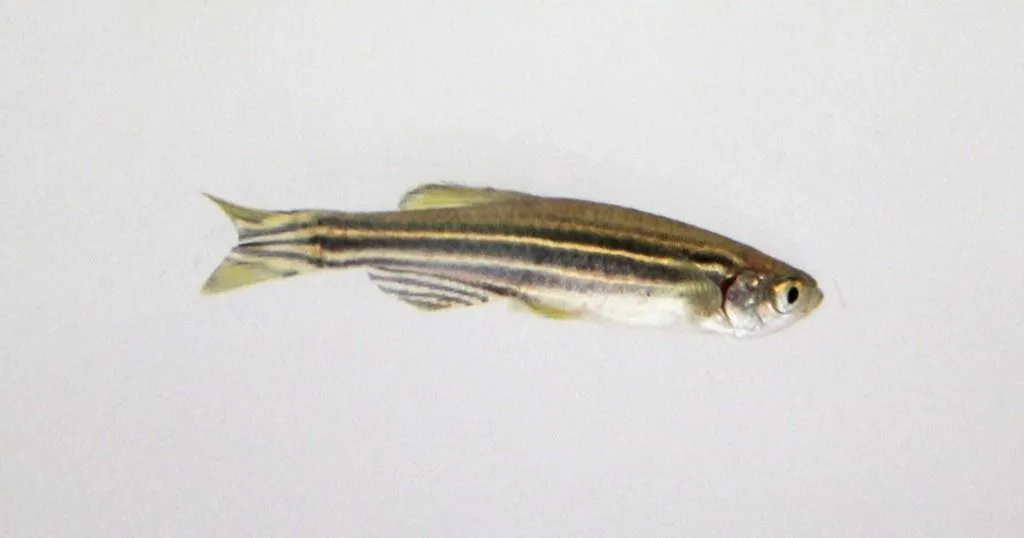Zebrafish help us to understand neurodegenerative and neuromuscular diseases
Teresa Capriello and colleagues use zebrafish to study the neuronal mechanisms of heavy metals in connection to neurodegenerative and neuromuscular diseases.
Posted by
Published on
Wed 20 Mar. 2019
Topics
| DanioVision | EthoVision XT | Neuroscience | Parkinson's Disease | Zebrafish |

Swimming against the stream: zebrafish help us to understand neurodegenerative and neuromuscular diseases like Parkinson’s
Teresa Capriello and colleagues from the University of Naples ‘Federico II’ have found something fishy about the effects of cadmium and aluminum on behavior. The team uses zebrafish to study the neuronal mechanisms of these heavy metals in connection to neurodegenerative and neuromuscular diseases.
Zebrafish are increasingly used as a model for neurotoxic effects because the neuropathological behavior is relatable to that shown in humans. Uncontrolled movements are typical in human patients with Parkinson’s. We will see that the fish in this study seem to show similar behavior.
Cadmium and aluminum are neurotoxins
Accumulation of cadmium and aluminum in the environment is a risk factor for the development of neurodegenerative diseases such as Parkinson’s and Alzheimer’s (Chin-Chan et al., 2015; Jomova et al., 2010). Since the modes of action of these heavy metals are not completely understood yet, they are subject to many studies. The neurotoxic mechanisms of aluminum are still especially unclear.
Shedding more light on neurotoxicity with zebrafish research
In previous studies, the team in Naples showed some neurotoxic effects of cadmium and aluminum in adult zebrafish during embryological development. The objective this time was, therefore, to find out more by studying the behavior of larvae.
Controlled circumstances for zebrafish larvae with DanioVision
The researchers studied both hatching rate and swimming ability. The motility of the larvae – both in the chorion and after hatching – was captured with DanioVision and analyzed with EthoVision XT software. To represent swimming ability, the parameters measured were distance moved, mean velocity, cumulative movement, heading, and meander.
The larvae were exposed to increasing levels of cadmium and aluminum. The larvae were placed in the observation chamber and kept individually in 96 well plates. Their motor activity was monitored for 72 hours, until 78 hours after hatching. In order to eliminate bias, the researchers performed the experiment three times, while keeping a steady temperature and giving the larvae 10 minutes to adapt to the light in the observation chamber.
Low frequency of spontaneous movements delays hatching
Hatching rate was lower in all treatments in comparison to the control group. The hypothesis was that the low frequency of movements in the chorion delayed the hatching process. For cadmium, the rate decreased with increasing levels of exposure, consistent with other results. For aluminum, more larvae hatched when exposed to higher doses. As we will see in the following behavioral results, the dose-response pattern repeated itself for almost all parameters, suggesting a similar underlying mechanism.
Sluggish and uncontrolled behavior
Exposure to cadmium and aluminum showed a clear detrimental effect on all measured motility behaviors. The interesting thing was the change in behavior for different doses of the metals.
For cadmium, the effects were dose-dependent, with the larvae becoming increasingly lethargic with increasing doses. The larvae covered less and less distance, at a lowering speed and they didn’t swim in one direction from the center anymore. Following that trend, these zebrafish also showed increasingly uncontrolled behavior (meander) with increased doses.
In contrast, the fish exposed to aluminum took a different route (pun intended). Their behavioral parameters all showed the opposite effect of cadmium exposure, increasing their motility with increasing doses of aluminum. Researchers suggested this might be a recovery of swimming ability. There was one exception, however: meander. Exposed to 200µM AlCl3, the movements of the larvae became increasingly uncontrolled – like with cadmium, they meandered more.
Does the dose make the poison?
According to the authors, this was the first time abnormal behavior of larval zebrafish to cadmium and aluminum has been compared. The contradicting results on motility prompted the researchers to formulate a new hypothesis; low levels of metal do not fully activate ‘protective mechanisms,’ thereby allowing extensive but not lethal damage.
Next to that, the increased uncontrolled movements of the larvae exposed to high levels of aluminum are considered important, because uncontrolled movements are typical of neurologic pathologies like Parkinson’s disease.
The zebrafish will be back
The authors emphasize that the mechanisms are still largely unclear. They do suggest there might be something interesting in the connection between the behavior seen in this study and the workings of the cholinergic system, affecting locomotor activity.
The story doesn’t end here. Lots of new questions have arisen and extra research is needed into the behavior of the zebrafish larvae exposed to cadmium and aluminum. It will contribute to a bigger understanding of the mode of action of these neurotoxins.
References
- Capriello, T.; Consiglio Grimaldi, M.; Cofone, R.; D'Aniello, S.; Ferrandino, I. (2019). Effects of aluminium and cadmium on hatching and swimming ability in developing zebrafish. Chemosphere, 222 (2019), 243-249.
- Chin-Chan, M.; Navarro-Yepes, J.; Quintanilla-Vega, B. (2015). Environmental pollutants as risk factors for neurodegenerative disorders: Alzheimer and Parkinson diseases. Frontiers in Cellular Neuroscience, 9, 124.
- Jomova, K.; Vondrakova, D.; Lawson, M.; Valko, M. (2010). Metals, oxidative stress and neurodegenerative disorders. Molecular and Cellular Biochemistry, 345 (1e2), 91e104.
Related Posts

Tiny plastics, big problems: do nanoplastics affect neurodevelopment?

How zebrafish and optogenetics are great for investigating stress

